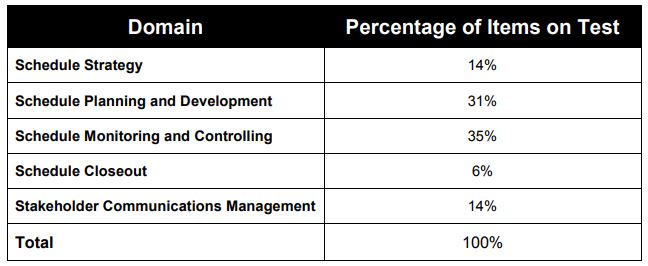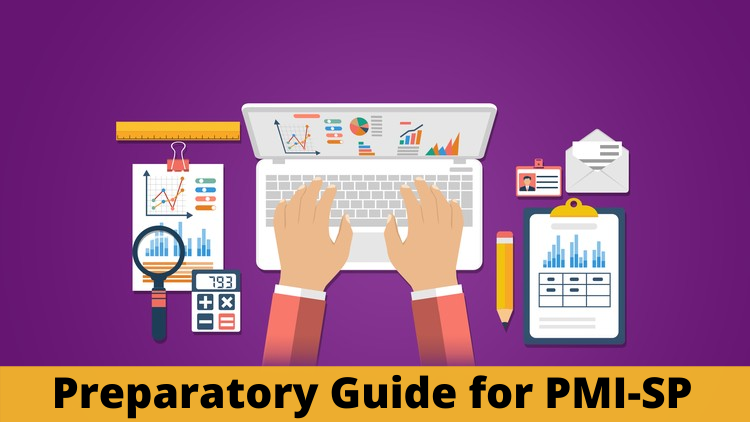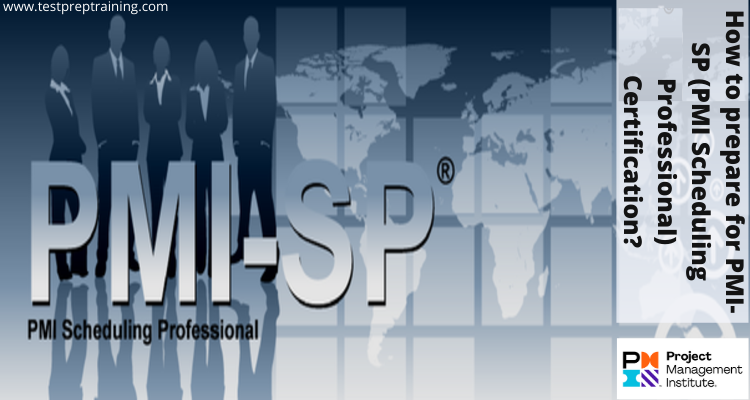The PMI-SP certification is designed for professionals who specialize in project scheduling and have experience in developing, managing, and maintaining project schedules. The certification validates the individual’s knowledge and skills in project scheduling techniques, tools, and best practices.
Holding the PMI-SP certification demonstrates an individual’s commitment to the project management profession and their ability to effectively manage project schedules. It also provides opportunities for career advancement and can lead to higher salaries and more challenging projects.
PMI-SP (PMI Scheduling Professional) Certification Glossary
Here are some key terms and concepts related to the PMI-SP (PMI Scheduling Professional) certification:
- Schedule Management Plan: A document that outlines how the project schedule will be developed, managed, and controlled.
- Critical Path: The sequence of activities that determine the earliest possible project completion date.
- Schedule Network Diagram: A graphical representation of the project schedule that shows the sequence and dependencies of project activities.
- Float: The amount of time that an activity can be delayed without delaying the project completion date.
- Resource Leveling: The process of adjusting the project schedule to ensure that resources are effectively utilized and that there are no resource overallocations.
- Schedule Compression: The process of shortening the project schedule without changing the project scope.
- Baseline: A snapshot of the project schedule that serves as a reference point for comparing actual progress against planned progress.
- Understanding Schedule Variance: The difference between the planned value of the project work and the actual value of the project work completed to date.
- Schedule Performance Index (SPI): A measure of project efficiency that compares the planned value of the project work to the actual value of the project work completed.
- Understanding Schedule Risk Analysis: The process of identifying and analyzing schedule risks and developing contingency plans to mitigate the impact of those risks.
- Schedule Change Control: The process of managing changes to the project schedule and ensuring that all changes are properly reviewed and approved.
- Schedule Quality Control: The process of verifying that the project schedule meets quality standards and that it accurately reflects the project scope and objectives.
Before moving to the Study Guide, let’s check out some sample questions on PMI-SMP.
Scenario:
You are a project scheduler for a construction company. The company has just been awarded a new project to build a high-rise commercial building. You have been asked to create a project schedule for the project and monitor its progress throughout the execution phase.
1. During the project planning phase, you have created a network diagram for the project. What is the purpose of the network diagram?
A. To identify project risks
B. To determine the project’s critical path
C. To estimate project duration
D. To identify project stakeholders
2. During the project execution phase, you notice that an activity is taking longer than expected. What should you do to ensure that the project stays on track?
A. Fast track the activity
B. Delay the activity
C. Crash the activity
D. Re-sequence the activity
3. During the project monitoring and controlling phase, you notice that the project is behind schedule. What should you do to bring the project back on track?
A. Add additional resources to the critical path activities
B. Reduce the scope of the project
C. Increase the project’s budget
D. Re-sequence the project activities
4. During the project closing phase, you need to evaluate the project’s performance. What is the purpose of the schedule performance index (SPI)?
A. To measure the project’s progress against the baseline schedule
B. To measure the project’s progress against the project budget
C. To measure the project’s progress against the project scope
D. To measure the project’s progress against the project risks
Answers:
- B. The purpose of the network diagram is to determine the project’s critical path. The critical path is the sequence of activities that determines the project’s overall duration and is the longest path through the network diagram.
- C. To ensure that the project stays on track, you should crash the activity. This involves adding additional resources to the activity to speed up its completion and reduce its duration.
- A. To bring the project back on track, you should add additional resources to the critical path activities. This can help to speed up the completion of these activities and reduce the project’s overall duration.
- A. The purpose of the schedule performance index (SPI) is to measure the project’s progress against the baseline schedule. The SPI compares the value of the work completed to the value of the work scheduled to be completed at a given point in time. A value of 1.0 indicates that the project is on schedule, while a value less than 1.0 indicates that the project is behind schedule.
More practice tests at Testprep Training.
PMI-SP (PMI Scheduling Professional) Certification Study Guide
Here are some resources for PMI-SP (PMI Scheduling Professional) Certification exam preparation:
- PMI-SP Handbook: This handbook provides detailed information on the PMI-SP certification exam, including eligibility requirements, exam content, and scoring. It also includes information on maintaining certification and the PMI Code of Ethics. Access it at: https://www.pmi.org/-/media/pmi/documents/public/pdf/certifications/scheduling-professional-handbook.pdf
- PMBOK Guide: The PMBOK Guide is the primary reference material for the PMI-SP exam. It outlines the standard project management practices and processes. Access it at: https://www.pmi.org/pmbok-guide-standards/foundational/pmbok
- PMI-SP Exam Content Outline: This document provides a breakdown of the exam content, including the domains and tasks that will be tested. Access it at: https://www.pmi.org/-/media/pmi/documents/public/pdf/certifications/scheduling-professional-exam-outline.pdf
- PMI-SP Exam Prep Materials: PMI offers a variety of exam preparation materials, including study guides, practice exams, and online courses. Access them at: https://www.pmi.org/certifications/scheduling-professional/sp-exam-preparation
- PMI-SP Exam Simulator: This simulator provides a realistic exam experience, allowing you to practice under simulated exam conditions. Access it at: https://www.pmi.org/shop/p-/elearning/pmi-scheduling-professional-simulator/16202
- PMI-SP Certification FAQs: This page provides answers to frequently asked questions about the PMI-SP certification, including eligibility requirements, exam content, and maintaining certification. Access it at: https://www.pmi.org/certifications/scheduling-professional/faq
PMI-SP (PMI Scheduling Professional) Certification Exam Tips and Tricks
Here are some tips and tricks for preparing for the PMI-SP (PMI Scheduling Professional) Certification exam:
- Understand the exam format: The PMI-SP exam is a computer-based test consisting of 170 multiple-choice questions. Candidates have four hours to complete the exam.
- Focus on critical areas: Some areas of the exam are weighted more heavily than others. Focus your study efforts on these areas to ensure that you have a strong understanding of the most critical concepts.
- Take practice exams: Practice exams can help you identify areas where you need to focus your study efforts. Take as many practice exams as possible to build your confidence and improve your chances of success.
- Time management: The PMI-SP exam is time-limited, so it’s important to manage your time effectively during the exam. Use your time wisely, and don’t get stuck on a single question. Make sure to allocate enough time to review your answers before submitting the exam.
- Stay calm and focused: Don’t let nerves or distractions affect your performance during the exam. Take deep breaths, stay focused on the questions, and approach each question with a clear mind.
Course Outline

Preparatory Guide for PMI-SP Certification
Getting success in the PMI-SP exam is comparable to planting a seed. There are many IT professionals who desire to pass the PMI-SP exam but somehow fail to score good grades in their selected exams. This might be due to a bad selection of sources employed in their creation or, more often, insufficient research materials. The biggest cause, we believe, is the source or platform from which you choose to study. We understand your anxiety, which is why our specialists have put together a step-by-step guide to assist you in passing the PMI-SP certification test. Make a point of reading these materials at least twice. Also, for your PMI SP preparation, attempt to acquire a big image of each of them.

Step 1 – PMI-SP Handbook
First and foremost, the PMI- SP manual is quite helpful in understanding the application procedure and arranging the examination. This manual contains instructions for applying for the PMI-SP. As a result, PMI demands that all certification candidates study the full guide. The goal of this PMI-SP Book is to present you with all of the necessary details on the policies and procedures for acquiring and maintaining a PMI certification.
Step 2 – Read and Understand the PMBOK Guide
In addition, you can make a visit and explore the content given in the PMBOK guide before you hop onto other reliable sources. The PMI-SP exam doesn’t revolve around so many things, rather it has a much-focused content which only PMBOK guide can take you through. First, you need to go through the PMBOK guide and then explore and focus on other areas in a rigorous manner. Once you are all set with the PMBOK guide, further you can explore the PMI-SP exam objectives to collect an in-depth understanding of the exam objectives as they are of supreme importance for your exam.
Step 3 – Join Certification Training
Subsequently, if the PMBOK guide fails to or doesn’t contribute much to your preparation process, then you need to and you should go for PMI SP Training Online without any second thought to help you prepare for the exam. Preparing for the test might be pointless if you aren’t familiar with its essential concepts. As a result, we strongly advise you to attend PMI-SP certification training at or near your home. The reason for this is that you won’t feel tired travelling and coming back, and you’ll have the mental stamina to concentrate on your test preparation.
Step 4 – Practice or Mock Tests
Finally, practice or mock examinations might be one of the most useful resources for preparing for the exam. PMI SP Practice Questions are comparable to the actual exam in several ways. Furthermore, the primary goal of creating practice tests is to simulate the exam setting for the candidate. As a result, taking practice examinations might help you identify your strengths and limitations. They help you recognize where you’re falling short and how to improve in those areas. Most essential, when you’ve gone over the entire curriculum, make sure you’re taking practice examinations. It will assist you in pricing evaluation as well as confidence boosting. Ready to evaluate yourself, try free official practice test here!
Expert’s Corner
To conclude, we can say that the right tools and the use of the latest technology are not the only things that make a project schedule come to life. Rather, it takes the right person, with the kind of skill that comes directly from experience and knowledge. Furthermore, as more and more projects are launching into the cybersphere, having project schedules that can remain on task and unfold in their agreed-upon timeline is now more important than ever.
Therefore, if you are someone who has fallen in love with professional scheduling, then receiving a professional scheduling credential from PMI will help you stand out from other project management certification examinations and development practices that are out there. Not to mention, recruiters see your PMI-SP experience. That is to say, they will be eager to scoop you up and get you start on board their own team.
Discover the world of project management with advanced learning skills and expert tutorials on PMI-SP Exam. Prepare and become a Certified PMI Scheduling Professional Now!


